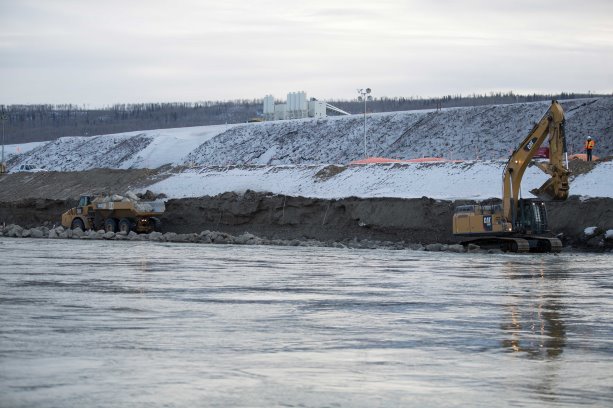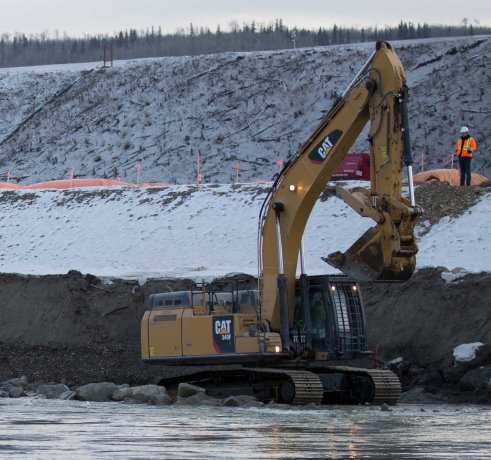Major power and utility projects worldwide tend to go horribly over budget and be completed well past deadline, and Canada must take steps to avoid the plague as it embarks on new builds in the sector, says an EY report released earlier this month.
EY’s report titled Spotlight on Canadian power and utility megaprojects, indicated that while Canada performs better than the U.S. in terms of delivering infrastructure megaprojects, they still come in 39 per cent over budget and 12 months behind schedule on average.
Internationally, out of 100 power and utility (P and U) projects surveyed, hydropower and nuclear projects suffered the greatest cost overruns, at US$4.6 billion and US$4 billion, respectively.
Viewed collectively, the EY survey found that 74 per cent of hydropower, water, coal and nuclear infrastructure projects worldwide were over budget by 49 per cent on average, with offshore wind and gas-powered generation projects the best performers.
Domestically, Canada is currently engaged in a new wave of P and U projects of various types including nuclear and hydropower.
The Conference Board of Canada has reported that $347.5 billion in new investment will be required by 2030 to maintain existing electricity capacity in Canada.
EY’s national leader for infrastructure advisory Michael Kennedy said provinces such as Ontario and Quebec, which are currently undertaking massive nuclear and hydroelectric power projects after periods of relative inactivity in those sectors, will face challenges marshalling the technical expertise and project leadership needed to make budgets and deadlines for those projects.
"Because we have not made a lot of investments in P and U projects in North America in the last 20 or 30 years, the delivery capacity has been eroded," said Kennedy. "And we would say they (stakeholders) have been slow to react, in the sense of recognizing that the erosion has taken place."
Besides project size and complexity, EY cited two other problems that could plague P and U project delivery in Canada. Talent constraints exacerbated by aging leadership in an era of technological challenges are an issue everywhere in the world, Kennedy said. Compounding things, Canada’s regulatory and environmental regimes across several jurisdictions cause delays that project leaders have not yet figured how to overcome.
Even hydroelectric projects are more complex than they might seem, he said.
"You have, in the case of hydro, typically remote locations, interconnectedness with existing grids is technically a challenge and frankly in North America there have not been huge developments of hydro projects in the last 20 years, so the more recent expansion in hydroelectric capacity…is a strain on the system really. This is true right across P and U, because the expertise that existed has got older, and there is less internal capability for firms to go from doing capital investments of $100 million a year or a billion a year to suddenly doing $5-, $6-, $10-billion a year," said Kennedy.
It is the same with nuclear projects, he said, citing a major British project that is lurching from problem to problem.
"The technical requirements have moved on from 30 years ago when the last one was built," he said. "Advances in technology, efficiency, new safety standards, you name it."
Increased regulatory demands have transformed project timelines, said Kennedy.
"The narrative has changed significantly," he said. "I have been in B.C. 18 years now and the start of construction is now kind of the midpoint of a project whereas the start of construction used to be 20 per cent into a project because of the regulatory framework and environment approvals needed."
Added Kennedy, "These projects cannot be delayed indefinitely. There has to be a time when you have to decide whether you want to do these or not. That point of decision has to come quicker."
In the global hunt for talent, Canada is uniquely positioned with an existing pool of talented engineers, technicians and project managers that is supplemented by immigrants attracted by the country’s reputation for inclusivity, said Kennedy. It’s an asset that is magnified today as the Trump uncertainty and Brexit tend to cause talent to seek safe havens, Kennedy said — a point just made in a recent discussion he had with EY colleagues in the U.S.
"When you are sitting in project meetings for major projects, not just P and U ones, at least half the room will have been born outside of Canada but will have chosen Canada as a place to make their home," he said.
P and U stakeholders need to pursue young talent aggressively, he added.
"I think public entities need to be braver and more willing to embrace the talent and expertise out there rather than thinking they can do it themselves," said Kennedy.

The Site C project is more than one year into construction. The $8.8-billion dam intends to meet future electricity needs by providing 1,100 megawatts of capacity and producing about 5,100 gigawatt hours of energy each year. It is scheduled to be complete in 2024. Pictured is Site C work crews conducting rip rap replacement on the project’s south bank.
Photo: BC Hydro"










Recent Comments
comments for this post are closed